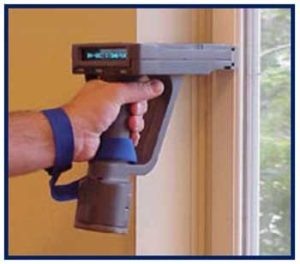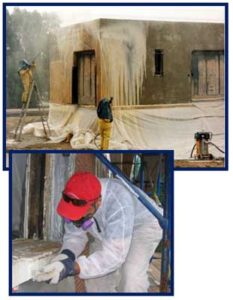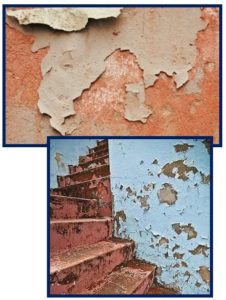Lead Surveys and Abatement Services
 In the past, lead was commonly added to paint as a stabilizer. Use of lead in residential paint was banned by the U.S. Environmental Protection Agency (EPA) on January 1, 1978. However, lead-based paint remains in many homes across the country. In addition, lead-based paint continues to be used in industrial and military facilities.
In the past, lead was commonly added to paint as a stabilizer. Use of lead in residential paint was banned by the U.S. Environmental Protection Agency (EPA) on January 1, 1978. However, lead-based paint remains in many homes across the country. In addition, lead-based paint continues to be used in industrial and military facilities.
Lead is considered a toxic substance and exposure can result in adverse health effects, especially in young children. Lead is a cumulative poison, meaning the body cannot rid itself of lead and concentrations accumulate in the body each time exposure occurs. Lead poisoning can cause damage to the brain, kidneys, liver and other vital organs, and in children can also result in stunted growth and learning disabilities
 Laws and regulations require that lead paint hazards be identified and abated in residential homes occupied by children under the age of six, and recommend that all houses constructed or renovated prior to 1980 be evaluated.
Laws and regulations require that lead paint hazards be identified and abated in residential homes occupied by children under the age of six, and recommend that all houses constructed or renovated prior to 1980 be evaluated.
Laws and regulations also required industrial and commercial companies to eliminate employee lead exposure by identifying lead hazards, implementing management plans, implementing engineering or administrative controls, removing or encapsulating lead materials, and monitoring employee exposure levels.
 Total Environmental & Safety, LLC’s (Total) associates include Certified Lead Risk Assessors, Certified Industrial Hygienists (CIH) and other certified safety professionals trained and experienced in 1) the laws and regulations that govern the use, maintenance, and exposure of lead materials, 2) lead assessment hazard identification methodology, 3) lead bulk, wipe, soil, and air sampling, and 4) lead abatement.
Total Environmental & Safety, LLC’s (Total) associates include Certified Lead Risk Assessors, Certified Industrial Hygienists (CIH) and other certified safety professionals trained and experienced in 1) the laws and regulations that govern the use, maintenance, and exposure of lead materials, 2) lead assessment hazard identification methodology, 3) lead bulk, wipe, soil, and air sampling, and 4) lead abatement.
Additional supporting services provided by Total:
- Lead Inspections and Surveys
- Lead Risk Assessments
- Lead Abatement Design and Removal
- Lead Exposure Monitoring
- Lead Safety Program Development and Implementation
- Lead Safety Training


